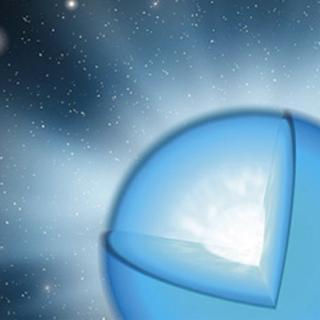Bibcode
Dunstall, P. R.; Dufton, P. L.; Sana, H.; Evans, C. J.; Howarth, I. D.; Simón-Díaz, S.; de Mink, S. E.; Langer, N.; Maíz Apellániz, J.; Taylor, W. D.
Bibliographical reference
Astronomy and Astrophysics, Volume 580, id.A93, 10 pp.
Advertised on:
8
2015
Journal
Citations
168
Refereed citations
148
Description
We investigate the multiplicity properties of 408 B-type stars observed
in the 30 Doradus region of the Large Magellanic Cloud with multi-epoch
spectroscopy from the VLT-FLAMES Tarantula Survey (VFTS). We use a
cross-correlation method to estimate relative radial velocities from the
helium and metal absorption lines for each of our targets. Objects with
significant radial-velocity variations (and with an amplitude larger
than 16 km s-1) are classified as spectroscopic binaries. We
find an observed spectroscopic binary fraction (defined by periods of
<103.5 d and mass ratios >0.1) for the B-type stars,
fB(obs) = 0.25 ± 0.02, which appears constant across
the field of view, except for the two older clusters (Hodge 301 and SL
639). These two clusters have significantly lower binary fractions of
0.08 ± 0.08 and 0.10 ± 0.09, respectively. Using synthetic
populations and a model of our observed epochs and their potential
biases, we constrain the intrinsic multiplicity properties of the dwarf
and giant (i.e. relatively unevolved) B-type stars in 30 Dor. We obtain
a present-day binary fraction fB(true) = 0.58 ± 0.11,
with a flat period distribution. Within the uncertainties, the
multiplicity properties of the B-type stars agree with those for the O
stars in 30 Dor from the VFTS.
Appendices A, B are available in electronic form at http://www.aanda.orgFull
Tables 2 and 3 are only available at the CDS via anonymous ftp to http://cdsarc.u-strasbg.fr
(ftp://130.79.128.5) or via http://cdsarc.u-strasbg.fr/viz-bin/qcat?J/A+A/580/A93
Related projects

Physical properties and evolution of Massive Stars
This project aims at the searching, observation and analysis of massive stars in nearby galaxies to provide a solid empirical ground to understand their physical properties as a function of those key parameters that gobern their evolution (i.e. mass, spin, metallicity, mass loss, and binary interaction). Massive stars are central objects to
Sergio
Simón Díaz